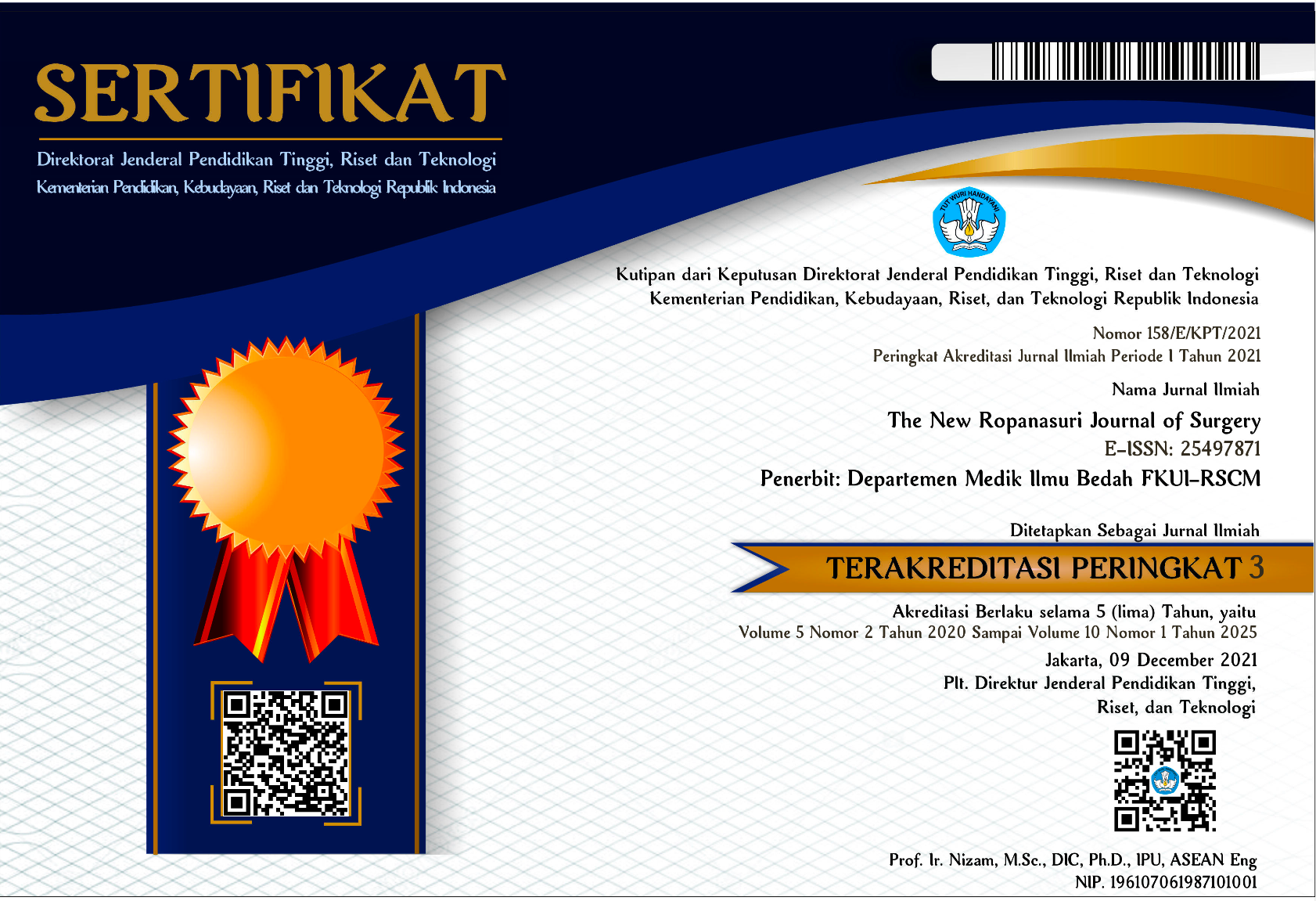Abstract
Introduction. The limited durability of vascular access referred to the great challenges in hemodialysis. An immature arteriovenous fistula (AVF) that inadequately develops to support dialysis noted as the leading cause to immature AVF if stenosis found after creation. The endovascular fistula salvage (EFS) addressed for the preemptive repair of immature AVF despite surgicalrevision. However, no study on EFS proceeded in Indonesia with its specific characteristics. Thus, this study aimed to evaluate the efficacy of EFS and its influencing factors. Method. A retrospective cohort study carried out on those with immature AFV who underwent EFS procedures during the period ofJanuary 2016 to December 2016. The primary patency after EFSwas assessed in correlation to subjects’ characteristics, anatomical variations, diabetes mellitus, and the length and diameter of balloon to post EFS patency Results. There was 125 stenosis noted, a total of 66 stenoses noted in juxta anastomosis. The average length of stenosis was 33.18 mm. Age, diabetes mellitus, length of stenosis and multiple stenoses were found as the influencing factors to the primary patency. The length of stenosis was the most influencing variable in 6 months primary patency (p
Recommended Citation
Darwis, Patrianef; Sitorus, Londung B.; and Muradi, Akhmadu
(2019)
"Long–Term Patency of Arteriovenous Fistula After Endovascular Salvage Procedure and It's Affecting Factors,"
The New Ropanasuri Journal of Surgery: Vol. 4:
No.
1, Article 2.
DOI: 10.7454/nrjs.v4i1.66
Available at:
https://scholarhub.ui.ac.id/nrjs/vol4/iss1/2













